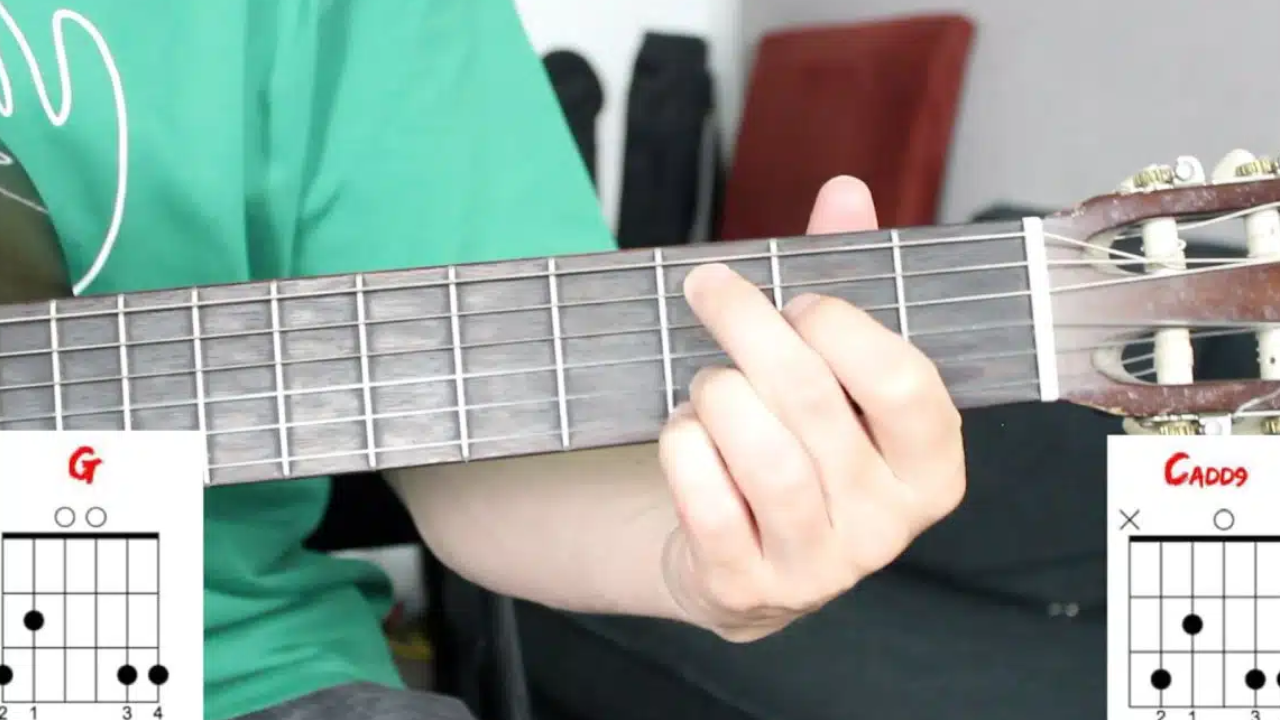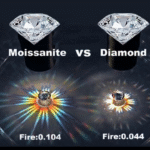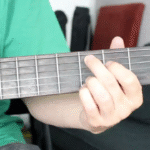The guitar is a universe of sound, and chords are its constellations. While power chords drive rock and barre chords offer harmonic richness, some chords possess a unique, evocative quality that instantly colors a song. Among these, the chord guitar cadd9 stands out as a perennial favorite, beloved by beginners and pros alike for its open, bright, and slightly suspended feel. It’s the sonic equivalent of sunlight filtering through leaves – warm, hopeful, and inherently musical. This guide delves deep into the Cadd9, exploring its construction, myriad voicings across the neck, practical applications in various genres, and tips for seamless integration into your playing. Understanding this versatile chord opens doors to countless songs and significantly enriches your harmonic palette.
Demystifying the Cadd9: Construction and Theory
At its core, the chord guitar cadd9 is a variation of the standard C major chord. Let’s break down its DNA:
- The Foundation: C Major (C)
- Root (R): C
- Major 3rd (3): E
- Perfect 5th (5): G
- Formula: 1 – 3 – 5
- The “add9” Magic:
- The “add” means we are adding a specific note on top of the basic triad (the 1-3-5 structure).
- The “9” refers to the 9th note in the C major scale. Counting up from C (1): C (1), D (2), E (3), F (4), G (5), A (6), B (7), D (8)… wait, that’s an octave! The 9th is actually the second scale degree (D), but played an octave higher. So, the 9th = D.
- Crucially: “add9” means we add the 9th (D) without including the 7th (B). If the 7th were present, it would be called C9. The absence of the 7th gives the add9 chord its characteristic clarity and openness.
The chord guitar cadd9 consists of the notes: C (Root), E (Major 3rd), G (Perfect 5th), and D (added 9th).
- Why it Sounds “Open” and “Suspended”: The D (9th) sits right between the C (Root) and E (3rd). This creates a subtle tension and ambiguity, reminiscent of a sus2 chord (which would be C, D, G – replacing the 3rd with the 2nd). However, in the Cadd9, the E (3rd) is still present, creating a richer blend where the major tonality is defined, but beautifully colored by the added 9th. This interplay between the 3rd and the 9th is the secret sauce.
Mastering Voicings: Playing Chord Guitar Cadd9 All Over the Neck
The beauty of the guitar lies in its ability to play the same chord in multiple locations, each offering a distinct timbre. Here’s a deep dive into essential chord guitar cadd9 shapes:
- The Open Position Classic (Easiest & Most Common):
- Fingering:
- Ring finger (3): 3rd fret, A string (C)
- Middle finger (2): 2nd fret, D string (E)
- Index finger (1): Optional but common: 3rd fret, B string (D). Often omitted for simplicity.
- Pinky finger (4): 3rd fret, high E string (G) – This is the key note defining the voicing!
- Strings Played: D, G, B, high E. (A string muted or not played, low E string muted).
- Notes: G (5th), C (Root), E (3rd), G (5th octave) – This is technically Cadd9/G (Cadd9 with G in the bass). Adding the index on the B string gives you the full C, E, G, D.
- Sound: Bright, jangly, quintessential acoustic sound. The high G on the 1st string is its signature. Omitting the D (B string) still gives a strong add9 flavor due to the high G and open D and G strings resonating.
- Why it’s often called “Cadd9” even without the D: The open D string (the 9th!) rings clearly, providing the essential added 9th note. This is the most accessible chord guitar cadd9 shape.
- The “D-Shape” Barre (Movable Power):
- Concept: Based on the open D major shape, moved up the neck.
- Fingering (at 3rd fret for Cadd9):
- Index finger (1): Barre across the G, B, and high E strings at the 5th fret. (This barre plays G on G string, C on B string, E on high E string).
- Ring finger (3): 7th fret, B string (D) – if not covered by barre.
- Middle finger (2): 5th fret, D string (G) – Optional for fuller sound, but often omitted.
- Simplified Common Version: Barre just G, B, high E at 5th fret (notes: G, C, E). The open A and D strings (if played) provide the Root (C is relative 5th fret of A? Wait…) This simplified shape often sounds best on electric with some drive, emphasizing the 3rd (E) and 5th (G) with the barre. For a true Cadd9 here, you need the D note.
- Better True Cadd9 “D-Shape” (Root on 5th string):
- Index finger (1): 3rd fret, A string (C)
- Ring finger (3): 5th fret, D string (G)
- Pinky finger (4): 5th fret, G string (C)
- Middle finger (2): 4th fret, B string (D) – This is the crucial 9th!
- Mute low E, play high E open (E) or mute.
- Notes: C (R), G (5), C (R octave), D (9), E (3). A fuller voicing.
- Sound: Brighter and tighter than the open position, great for rhythmic playing and moving up the neck. The movable barre version is powerful for key changes.
- The “A-Shape” Barre (Fuller Sound):
- Concept: Based on the open A major shape, barred.
- Fingering (at 3rd fret for Cadd9):
- Index finger (1): Barre across ALL strings at the 3rd fret.
- Ring finger (3): 5th fret, D string (G)
- Pinky finger (4): 5th fret, G string (C)
- Middle finger (2): 4th fret, B string (D) – The essential 9th!
- Notes (Low to High): G (5th), C (R), E (3rd), G (5th), C (R), E (3rd). The barred index on the 3rd fret gives: G (low E), C (A), E (D), G (G), C (B), E (high E). Adding middle (D on B string) and ring/pinky (G and C on D and G) creates a very full Cadd9, but the core add9 sound is achieved with just the barre and the middle finger on the B string.
- Sound: Robust, full-range, great for strumming or when you need a solid harmonic foundation. Requires more finger strength.
- The “G-Shape” Variation (Higher Register):
- Concept: Based on the open G major shape, moved up.
- Fingering (at 5th fret for Cadd9):
- Index finger (1): 5th fret, low E string (A) – Often omitted or muted.
- Middle finger (2): 5th fret, A string (D) – The 9th!
- Ring finger (3): 7th fret, low E string (B) – Optional 7th, use cautiously.
- Pinky finger (4): 8th fret, D string (G) – Optional.
- Core Voicing (Focus on higher strings):
- Index finger (1): 5th fret, B string (E)
- Ring finger (3): 7th fret, D string (G)
- Middle finger (2): 5th fret, G string (C)
- Pinky finger (4): 8th fret, high E string (C)
- Mute A and low E. Notes: C (R), E (3), G (5), C (R octave). Missing the D! To add the 9th:
- Play the open D string (D) if possible, or fret the 7th fret on the G string (D) instead of the 5th fret (C). This becomes tricky. This shape is less intuitive for a pure Cadd9 but can imply it.
- Sound: Lush, higher-pitched, good for arpeggios or adding sparkle in the mid-range. Finding a clean voicing with the 9th requires careful fingering or using it as a partial chord.
- Triad Voicings (Simplicity on High Strings):
- High Voicing 1 (Strings 1-2-3):
- Index (1): 1st fret, G string (G#/Ab) – Mute this! Wrong note.
- Correct:
- Index (1): 5th fret, D string (G) – Optional Bass
- Middle (2): 5th fret, G string (C)
- Ring (3): 5th fret, B string (E)
- Pinky (4): 7th fret, high E string (D) – The 9th!
- Notes (D-G-B-e): G (5), C (R), E (3), D (9). A beautiful, compact chord guitar cadd9.
- High Voicing 2 (Strings 2-3-4):
- Index (1): 3rd fret, G string (Bb) – Mute!
- Correct:
- Index (1): 10th fret, D string (E) – Optional Bass
- Middle (2): 10th fret, G string (A) – Wrong!
- Better:
- Index (1): 8th fret, G string (D) – The 9th!
- Middle (2): 9th fret, B string (E)
- Ring (3): 10th fret, high E string (C)
- Notes (G-B-e): D (9), E (3), C (R). Root is in the melody! Very usable.
- Sound: Clear, melodic, perfect for embellishing progressions or playing in positions higher up the neck without a full barre. Essential for lead guitarists comping.
Why Use the Cadd9? Applications and Musical Colors
The chord guitar cadd9 isn’t just a pretty sound; it’s a powerful compositional and arrangement tool:
- Replacing the Standard Major Chord: This is its most common use. Swap a plain C major chord for a Cadd9. Instantly, the progression gains warmth, openness, and a less predictable, more sophisticated feel. It works brilliantly in intros, verses, and choruses. Try it in progressions like G – D – Em – Cadd9 instead of G – D – Em – C.
- Creating Suspension and Resolution: While not a true suspended chord (sus2, sus4), the add9 inherently carries some suspended flavor due to the close interval between the root and the 9th (C and D). It can create a gentle yearning that beautifully resolves back to the pure major chord or moves to another chord.
- Adding Texture in Fingerpicking: The added 9th (D) provides an extra note to pluck, enriching arpeggio patterns. The open strings in the common voicing resonate beautifully when fingerpicked.
- Enhancing Acoustic “Jangle”: The open position Cadd9, especially with open strings ringing, is a hallmark of folk, country, pop, and acoustic rock. Think James Taylor, Eagles, Tom Petty, Mumford & Sons, and countless modern singer-songwriters. Its brightness cuts through nicely.
- Smoothing Chord Transitions: Sometimes the fingering of a Cadd9 provides a smoother transition to the next chord in a progression than the standard C major shape.
- Genre Versatility: While prominent in acoustic genres, the Cadd9 is equally at home in:
- Pop: Adds brightness and accessibility.
- Rock: Provides contrast to power chords; great in ballads or cleaner sections.
- Country: Essential for that open, twangy sound.
- Folk: Core harmonic color.
- Worship Music: Creates an uplifting, spacious atmosphere.
- Jazz: Used as a colorful substitution or upper structure.
Practical Examples: Hearing Chord Guitar Cadd9 in Action
Let’s translate theory into recognizable sound. Here are common progressions showcasing the chord guitar cadd9:
- The Folk/Pop Staple:
- Progression: G – D – Em – Cadd9
- Application: Play the open position for all chords. Strum gently or fingerpick. Hear how the Cadd9 provides a brighter, less final resolution compared to a standard C major. Used in countless songs (“Let It Be” – Beatles uses C, but Cadd9 fits perfectly in this style; “Free Fallin'” – Tom Petty intro/verse uses variations including add9 flavors).
- The Bright Acoustic Intro:
- Progression: Cadd9 – G – Am – F
- Application: Start with the resonant open Cadd9. The high G note gives an immediate lift. Strum with dynamics. Very common in uplifting pop/folk tunes.
- Adding Sparkle to a Standard Progression:
- Original: C – Am – F – G
- Enhanced: Cadd9 – Am7 – Fmaj7 – G
- Application: Simply replacing the initial C with Cadd9 immediately modernizes and brightens the sequence. Adding the 7ths (Am7, Fmaj7) enhances the sophistication. Great for ballads or contemporary pop.
- Using Higher Voicings for Texture:
- Progression: (Open G) – (D/F# – Index on F# bass note) – (Em7) – (High Cadd9 triad on strings 2-3-4: e.g., 8th fret G string=D, 9th fret B string=E, 10th fret high E=C)
- Application: Play the G and D/F# in open/low positions. Play the Em7 as a standard open Em or a higher voicing. Resolve to the high Cadd9 triad. This creates a nice movement from lower to higher register, adding clarity and focus to the final chord. Experiment with arpeggiating the high Cadd9.
- Movable Power (Rock/Pop):
- Progression: Use the “D-shape” barre Cadd9 (simplified: barre G, B, e at 5th fret – notes G, C, E) followed by similar movable shapes for G (e.g., “D-shape” at 10th fret: B, E, G#? Wait…).
- Better Rock Progression Example:
- E5 (Power Chord: 7th fret A string, 9th fret D & G)
- B5 (2nd fret A string, 4th fret D & G)
- C#5 (4th fret A string, 6th fret D & G)
- A5 (Open A, or 5th fret E string, 7th fret A & D) – Not using add9 yet.
- Integrating Add9: Instead of pure power chords, occasionally play the fuller “A-shape” barre Cadd9 (3rd fret) or a partial add9 voicing within a power chord framework for choruses or bridges to add harmonic interest without losing drive. For example, over a C#5, add your pinky to the 8th fret on the B string (G#) for a C#add9 flavor (notes: C#, G#, C# with added D#? Wait… C#add9 = C#, E#, G#, D#). This illustrates that while add9 chords are powerful, integrating them tastefully with rock power requires knowing the movable add9 shapes based on the root.
Practice Makes Perfect: Integrating Cadd9 into Your Playing
Mastering the chord guitar cadd9 involves more than just learning the shapes:
- Start with the Open Position: Get comfortable with the fingering. Practice cleanly switching between C major and Cadd9. Listen to the difference.
- Strumming Patterns: Practice common strumming patterns (Down-Down-Up-Up-Down-Up, etc.) using the Cadd9. Focus on muting unwanted strings (especially the low E and A in the open position).
- Fingerpicking: Learn simple Travis picking patterns (e.g., alternating bass thumb on D string, fingers plucking G, B, e strings) using the open Cadd9. The open D and G strings provide beautiful resonance.
- Chord Transition Drills:
- G -> D -> Em -> Cadd9 -> G (Loop)
- C -> G -> Am -> F -> Cadd9 (Use Cadd9 as a variation on the final C)
- D -> Cadd9 -> G (Common resolution)
- Learn Songs That Use It: This is the best practice! Identify songs you like that feature the Cadd9 sound (search “songs that use Cadd9 chord”). Learning them in context solidifies its application. Examples: “Wonderwall” (Oasis – uses Cadd9 heavily), “Free Fallin'” (Tom Petty), “Collide” (Howie Day), “She Talks To Angels” (Black Crowes – intro), “Fast Car” (Tracy Chapman – verse), “Good Riddance (Time of Your Life)” (Green Day – intro).
- Experiment with Voicings: Once comfortable with the open shape, explore the barre chords and triad voicings. Find which ones feel and sound best for different musical situations. Use the triad shapes to add color higher up the neck during solos or instrumental breaks.
- Listen Critically: Pay attention to how professional guitarists use the Cadd9 (or add9 chords in other keys) in recordings. Notice when they use it instead of a major chord and the effect it creates.
FAQs About Chord Guitar Cadd9
- Is Cadd9 the same as C2?
No, they are generally considered different. C2 typically implies a sus2 chord (C, D, G – omitting the 3rd). Cadd9 specifically includes the major 3rd (E) along with the added 9th (D). The presence of the 3rd defines the major quality. However, in some informal contexts or chord charts, you might see “C2” used to mean Cadd9, but it’s technically ambiguous. Always look at the notes played.
- Can I use Cadd9 instead of C major anywhere?
Not always, but very often, yes! It usually works beautifully as a direct substitute, especially in acoustic, pop, folk, and rock contexts. It adds color without clashing. However, in very dense jazz harmony or specific classical progressions where the pure triad is functionally essential, it might sound out of place. Experiment and trust your ears. If it sounds good, it is good! The chord guitar cadd9 is remarkably adaptable.
- Why does the common open Cadd9 shape not always include the D note?
The magic of the open position voicing lies in the open strings. While fretting the A string (C) and high E string (G), the open D string rings loudly, providing the crucial D note (the 9th!). The open G string also rings, reinforcing the 5th. So, even without fretting the D note on the B string, the open D string is the added 9th. Adding the D on the B string (3rd fret) creates a denser voicing but isn’t strictly necessary for the core add9 sound in this position. This economy of fingering makes it so accessible.
- Does Cadd9 have a minor version?
Yes! The minor equivalent is Cmadd9. It consists of the C minor triad (C, Eb, G) plus the added 9th (D). Formula: 1 – b3 – 5 – 9. It has a beautifully melancholic yet complex sound. You can build it using similar movable shapes relative to a minor triad base.
Conclusion: Embrace the Color of Chord Guitar Cadd9
The chord guitar cadd9 is far more than just a simple variation; it’s a gateway to a richer, more expressive guitar vocabulary. Its unique blend of stability (from the major triad) and openness (from the added 9th) makes it incredibly versatile across genres. From the instantly recognizable jangle of the open position to the powerful drive of movable barre shapes and the melodic clarity of high triads, this chord offers endless possibilities.
We’ve explored its construction, dissected essential voicings from beginner-friendly to advanced, highlighted its practical applications in songwriting and arrangement, and provided concrete examples and practice strategies. Remember, the key to mastery is consistent practice and active listening. Start incorporating the Cadd9 into your favorite progressions, learn songs that feature it prominently, and experiment with its different sonic personalities across the fretboard.









